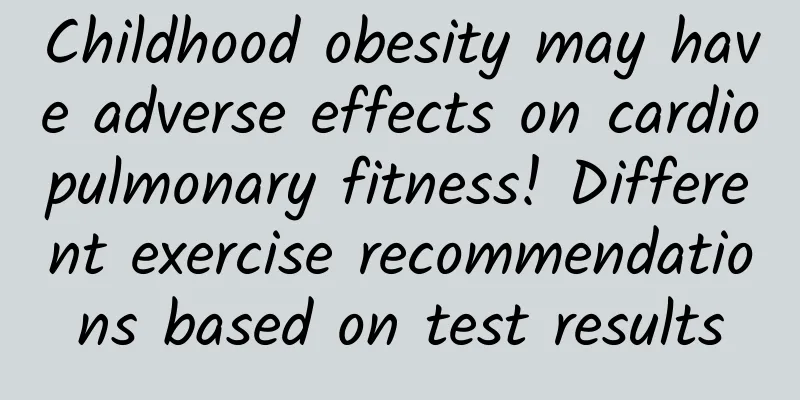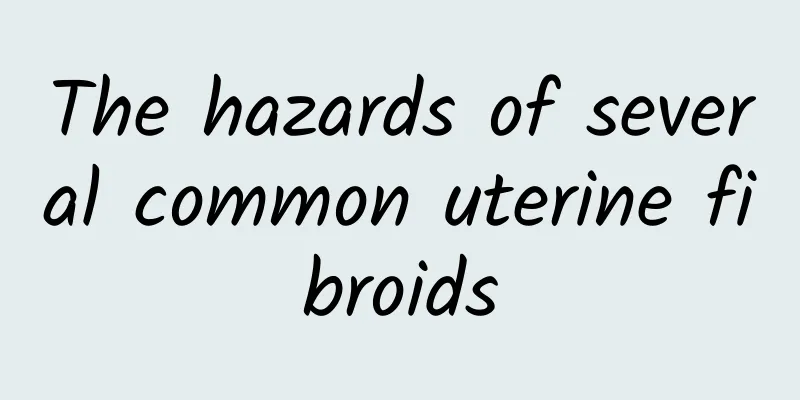Childhood obesity may have adverse effects on cardiopulmonary fitness! Different exercise recommendations based on test results

|
In the past two years, many countries have adopted online teaching in response to the COVID-19 pandemic. Children have taken classes at home, resulting in a decrease in daily activity and a lack of interaction with their peers. Research from the Cambridge Health Alliance in the United States also pointed out that during the COVID-19 pandemic, schoolchildren suffered from nutritional imbalances and increased obesity rates due to online classes. In fact, long before the COVID-19 pandemic, childhood obesity has been a public health issue of global concern. The author often encounters the following concerns from parents in the outpatient clinic. "Doctor, my mother-in-law wants me to raise my child to be plump and white, but he occasionally gets tired easily during elementary school physical education classes and doesn't like to exercise. What should I do?" "Doctor, my child has always loved sweets and drinks and doesn't like sports. Is there any tool that can help me understand his current physical condition? We have to practice relay races at the school sports meet, and I'm afraid he won't be able to handle it." What is childhood obesity? According to the National Health Administration's "Evidence-Based Guidelines for Childhood Obesity Prevention and Control," our country currently uses the body mass index (BMI) percentile for that age group as the cutoff for overweight or obesity. When the body mass index exceeds the 85th percentile for the age group, it is overweight, and when it exceeds the 95th percentile, it reaches the obese level! According to this definition, the obesity rate among school-age children in my country is as high as 15.2% for girls and 25.2% for boys. Moreover, if obese schoolchildren remain obese when they reach adolescence, there is a more than two-thirds chance that they will become obese adults. What impact does childhood obesity have on cardiorespiratory fitness? Overweight and obesity do have significant adverse effects on cardiorespiratory fitness in children and adolescents. If parents want to further understand their children’s condition, objective assessment of cardiorespiratory fitness can be simply divided into two methods: “indirect” and “direct”. Indirect method: (1) Use the Child Activity Questionnaire, which is a subjective scale that parents fill out after judging their child’s physical activity based on the questions asked. (2) Use healthy physical fitness, including 800/1600-meter run and walk, standing long jump, sit-ups, seated forward bends, 20-meter shuttle runs, etc., to calculate the maximum oxygen uptake through a formula. Because this method does not require sophisticated instruments and professional medical supervision, it is currently the method most used in the study of childhood obesity and cardiopulmonary fitness. Direct method: This is the cardio-pulmonary exercise test (CPET): under the supervision of a professional physician, a maximum exercise intensity test is performed using a children's bicycle or treadmill (see Figure 1). The maximum amount of oxygen inhaled by the child during exercise can be directly obtained. We call this value "peak oxygen consumption", which is currently the most accurate way to assess cardiopulmonary fitness. However, the higher the peak oxygen consumption is, the better it is. Although the peak oxygen consumption of an obese child weighing 70 kg is higher than that of a normal child weighing 45 kg, his cardiopulmonary capacity may be poorer. Another reference value: 3.5 ml of oxygen is consumed for every kilogram of body weight engaged in 1 minute of activity, which is called 1 basal metabolic equivalent (MET). We can divide the oxygen consumption by body weight and 3.5 to convert it into a MET value. In other words, after we exclude the factor of weight, the higher the peak MET value measured, the better the child's cardiopulmonary function. In addition, CPET can also help us understand the amount of physical activity of children, provide target intensity and risk limits for daily exercise, and through tracking after exercise training, we can also understand the progress of children. Together with the cardiopulmonary rehabilitation team of Kaohsiung Veterans General Hospital, we analyzed the CPET results of 897 preschoolers and schoolchildren over the past five years and divided the data into four age groups: 4 to 6 years old, 7 to 9 years old, 10 to 13 years old, and 14 to 18 years old. We found that regardless of the age group, as long as the overweight or obese children were found, their peak oxygen consumption and peak metabolic equivalents (METs) were significantly lower than those of normal children, indicating that overweight and obesity do have significant adverse effects on the cardiorespiratory fitness of children and adolescents. This study was also published in an SCI journal related to child health (Frontiers in Pediatrics) in 2020, representing international attention to the issue of childhood obesity. My child meets the definition of childhood obesity, what should I do? Improving childhood obesity requires a three-pronged approach of diet, exercise, lifestyle, and behavioral changes. Currently, drug therapy or surgery is not recommended as the first line of treatment. The World Health Organization recommends that children or adolescents aged 5 to 17 years old should accumulate at least 60 minutes of moderate-intensity or vigorous-intensity aerobic exercise every day. Generally speaking, we define activities of 3 to 6 METs as moderate-intensity, and activities of more than 6 METs as vigorous-intensity activities. You can refer to (Table 1) for MET values and intensity classification information for common activities and sports for children. If your baby needs professional assistance, many rehabilitation departments of regional-level and above hospitals in my country currently have cardiopulmonary rehabilitation departments with professional rehabilitation physicians, physical therapists, and sports guards who have established standardized procedures for cardiopulmonary exercise testing and completed them with professional assistance. After the child has been tested, safer and more sustainable exercise recommendations can be given to the child based on the test results (Figure 2), improving exercise ability and increasing the confidence and motivation of parents and children. Let us work together to create a safe and reliable health plan for our next generation! (This table is adapted from the online information of the National Health Administration of the Ministry of Health and Welfare and the Department of Sports and Physical Education of the Chinese University of Hong Kong) Metabolic equivalents (METs) can be considered an indicator of the intensity of physical activity. Generally speaking, activities below 3 METs are considered low-intensity; activities between 3 and 6 METs are considered moderate-intensity; and activities above 6 METs are considered vigorous-intensity. (http://rehab.com.tw/2022/02/22/%E5%85%92%E7%AB%A5%E8%82%A5%E8%83%96%E5%B0%8D%E6%96%BC%E6%82%A8%E7%9A%84%E5%AD%A9%E5%AD%90%E6%9C%89%E4%BB%80%E9%BA%BC%E5%BD%B1%E9%9F%BF%EF%BC%9F%EF%BC%8D%E5%85%BC%E8%AB%87%E5%AD%A9%E7%AB%A5%E5%BF%83/) Author: Dr. Duan Shenghui, Chief Physician of the Rehabilitation Department of Qishan Hospital, Ministry of Health and Welfare, PhD student of the National Cheng Kung University Institute of Health Care, Executive Secretary of the Academic Committee of the Taiwan Cardiopulmonary Rehabilitation Medical Association |
Recommend
What are the diagnostic criteria for chronic pelvic inflammatory disease?
As we all know, women are a group that is prone t...
How should women view the symptoms of cervicitis? Chronic cervicitis has five clinical manifestations
The cervical glands can secrete viscous secretion...
What are the symptoms of vulvar leukoplakia
According to medical evidence, the incidence of v...
Analysis of the causes of postpartum vaginitis
At present, many women are infected with vaginiti...
Can hyperprolactinemia be cured?
If you suffer from hyperprolactinemia, this disea...
The more you lose weight, the more tired you become! 2. Drinking tea can be a stumbling block to weight loss
Haven’t lost weight yet, but feel increasingly ex...
What medicine should be used for vulvar leukoplakia during pregnancy preparation? What should I do if there is white discharge from the lower body during pregnancy preparation?
Preparing for pregnancy is a process full of expe...
Will wearing braces make you thinner? 5 dietary tips to avoid obesity
Will I lose weight if I wear braces? This is a qu...
What are the treatments for ectopic pregnancy?
Ectopic pregnancy has become a common female dise...
What are the dangers of cervical precancerous lesions during pregnancy
Women are very worried about their health when it...
What measures can be taken to detect irregular menstruation?
Most gynecological diseases are cured faster the ...
Draw circles to slim your arms without props and do it anytime
Many girls do not get enough exercise, especially...
How to get pregnant with adenomyosis
Adenomyosis is a very common gynecological diseas...
What is the best way to treat vulvar itching?
There is generally no best way to treat vulvar it...
Food and medicine for health and disease prevention: Chinese yam (Part 1)
Yam Wildyam The most effective anti-cancer compon...









